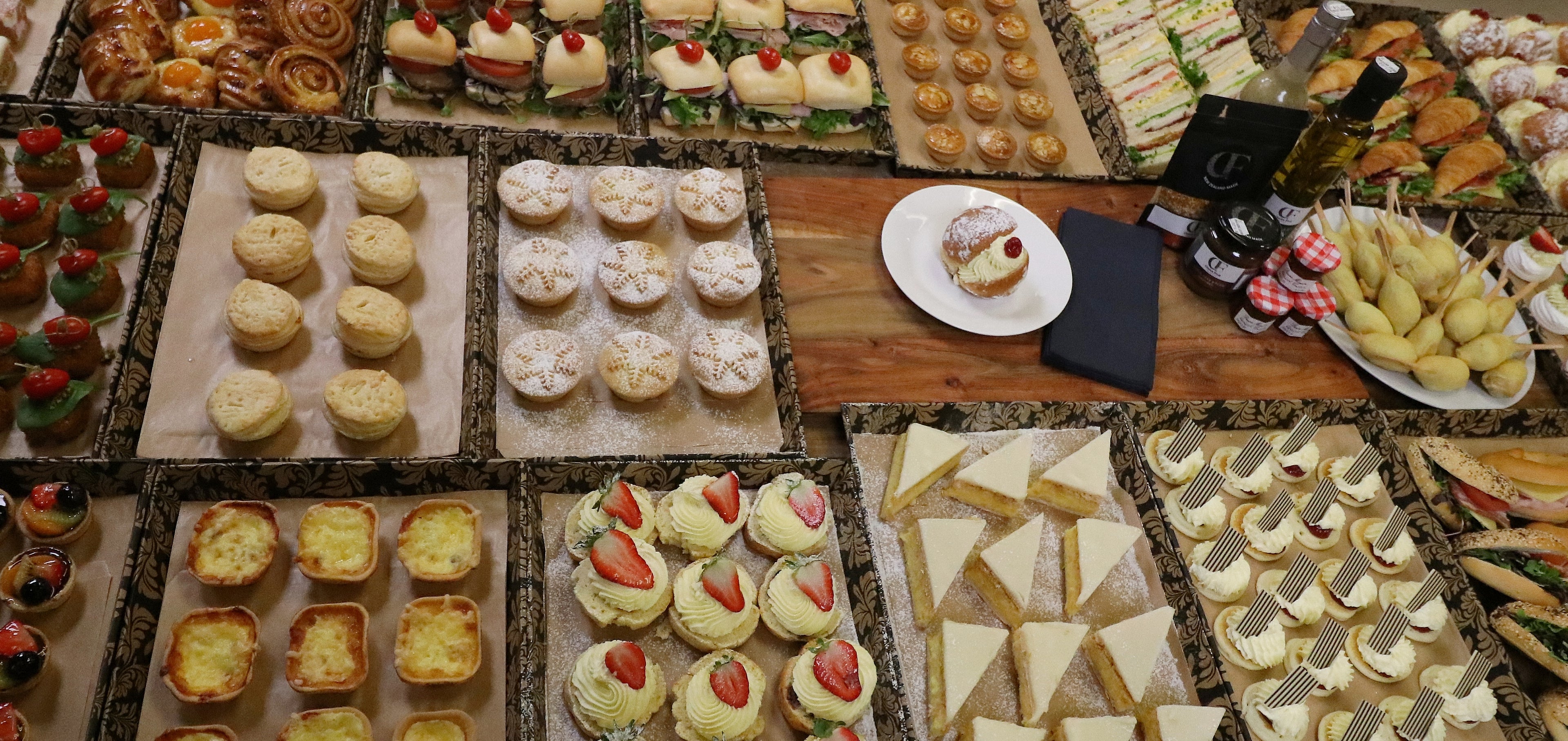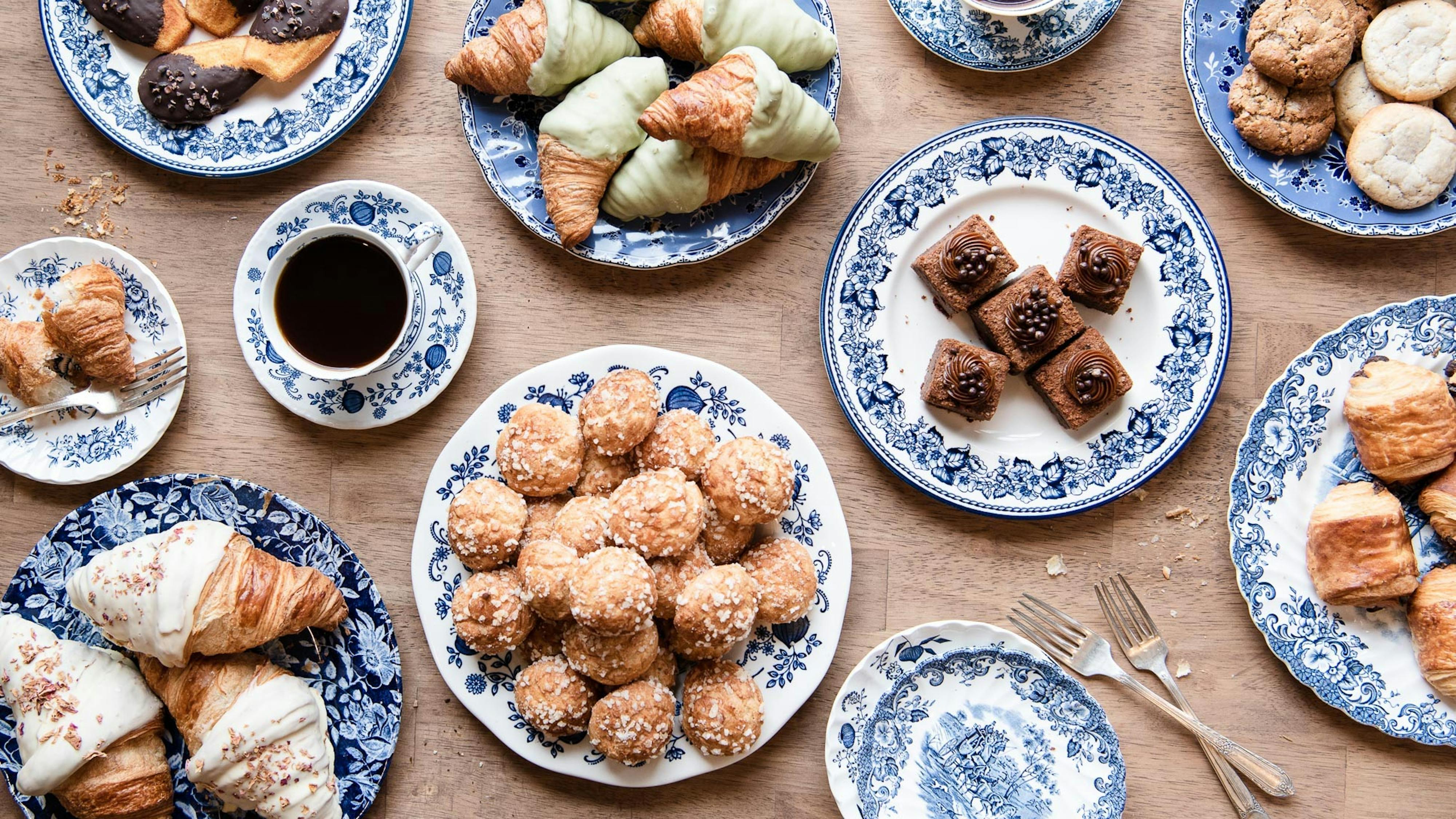Bakeshop Catering Maddington: Perfect for Weddings and Events
Bakeshop Catering Maddington: Perfect for Weddings and Events
Blog Article
Understanding the Art of Bakeshop Products: From Newly Baked Breads to Alluring Pastries and Finger Foods
The elaborate art of pastry shop items encompasses a spectrum of strategies and components that transform fundamental parts right into cooking delights. From the scientific research behind the excellent loaf of bread, where fermentation and gluten development play essential duties, to the skill needed for developing layered pastries, each aspect reveals an engaging story of craftsmanship. The convenience of finger foods illustrates how flavor and texture can be artfully combined to involve varied preference choices. As we explore these aspects, one might question: what underlying principles control the success of these cherished productions?
The Scientific Research of Bread Making
At the heart of every loaf of bread lies an interesting interaction of chemistry and biology. The procedure of bread making begins with the mix of flour, salt, water, and yeast-- each active ingredient playing a crucial function in the end product. Flour has healthy proteins, mainly glutenin and gliadin, which, when blended with water, type gluten (Catering Maddington). This flexible network is crucial for trapping gases generated throughout fermentation.
Yeast, a living organism, ferments the sugars present in the flour, producing co2 and alcohol in the procedure. The carbon dioxide gas produces bubbles in the dough, creating it to increase and establish a light texture. The temperature and humidity during fermentation substantially affect yeast activity and, as a result, the bread's flavor and appearance.

Mastering Bread Methods
How can one achieve the fragile equilibrium of structure and taste that specifies exceptional bread? Grasping bread techniques needs a deep understanding of ingredients, methods, and the science behind them. Fundamental to this craft is the option of premium ingredients-- flour, butter, sugar, and eggs-- each playing a critical duty in the end product's taste and structure.
The method of lamination, which entails folding layers of dough and butter, produces the wanted flakiness in pastries like croissants and smoke pastry. Precision in temperature level is vital, as butter should continue to be cool to make certain optimal layers. Proper blending approaches, such as the creaming technique for cakes, guarantee also incorporation of air and fat, resulting in a light and ventilated crumb.
Moreover, keeping the ideal moisture degrees during baking can substantially influence the end result, making sure that breads climb properly and achieve that golden-brown surface. The art of pastry likewise demands perseverance and method; each effort boosts one's skill and understanding of the elaborate equilibrium required to create alluring breads that thrill the detects. Proficiency in these techniques inevitably differentiates a competent bread chef from an amateur.
Types of Finger Foods
The world of cooking thrills prolongs beyond breads to incorporate a large array of finger foods, which are commemorated for their benefit and versatility. These bite-sized deals with are perfect for celebrations, offering a selection of tastes and appearances that provide to varied tastes.

On the sweeter side, bite-sized cupcakes and small tarts offer a wonderful finish to any kind of dish, attracting those with a pleasant tooth. Moreover, cheese and charcuterie boards work as an advanced selection, enabling browse around this site guests to tailor their attacks with a selection of meats, cheeses, nuts, and fruits.
Taste Profiles in Baking
Cooking is a complex dancing of taste accounts that combines sweet, savory, and umami notes to create an unified experience for the taste. Comprehending these profiles is important for bakers seeking to raise their creations.
Sweet taste typically serves as the structure in baked items, with sugars, fruits, and natural sugar enhancing taste deepness. Components such as chocolate and sugar present complicated wonderful notes that can either control or complement other tastes. Alternatively, tasty aspects, usually found in breads and breads, supply balance and contrast. Components like cheeses, flavors, and natural herbs can change a straightforward dough into a diverse taste experience.
Umami, regularly neglected in baking, plays a substantial role in enhancing flavors. Components such as aged cheeses, fermented products, or perhaps certain nuts add to a mouthwatering deepness that boosts general taste.
Furthermore, the interplay of acidity from ingredients like buttermilk or citrus enthusiasm can lighten up tastes, offering a revitalizing counterpoint to sweet taste. By attentively integrating these flavor accounts, bakers can craft products that resonate with diverse tastes buds, creating a remarkable cooking experience. Eventually, mastering taste accounts is vital to advancement worldwide of cooking.
Essential Cooking Devices and Ingredients
Recognizing flavor profiles in baking sets the phase for choosing the right devices and ingredients that assist in the production of remarkable baked items. A reputable collection of baking pans-- such as sheet pans, loaf pans, and cake frying pans-- is essential for attaining wanted shapes and appearances.
In terms of ingredients, quality issues considerably. Flour acts as the foundation of the majority of dishes; choosing the appropriate type-- be it all-purpose, bread, or pastry flour-- can considerably impact the end result. Sugar not just sweetens yet also contributes to appearance, while eggs function as binders and leavening representatives. Baking powder and baking soda are vital for developing lift in cakes and breads.
Additionally, incorporating flavor boosters like vanilla extract, seasonings, and citrus zest can raise your productions. By ensuring access to these basic tools and components, bakers can confidently start their cooking journey, crafting a diverse selection of wonderful baked goods.
Final Thought
Mastery in bread production, bread prep work, and finger food discussion reveals the intricate relationships in between ingredients and processes. Birthday Catering Maddington. Exploring varied taste accounts enriches the baking experience, while crucial try this website devices and active ingredients give the foundation for success.
Exactly how can one attain the delicate balance of appearance and flavor that defines exceptional bread? Fundamental to this craft is the option of high-grade active ingredients-- flour, butter, sugar, and eggs-- each playing an important function in the last product's taste and texture.

Recognizing flavor profiles in cooking sets the stage for choosing the right devices and active ingredients that help with the creation of phenomenal baked items. Exploring diverse taste accounts enriches the baking you could try these out experience, while important tools and components give the structure for success.
Report this page